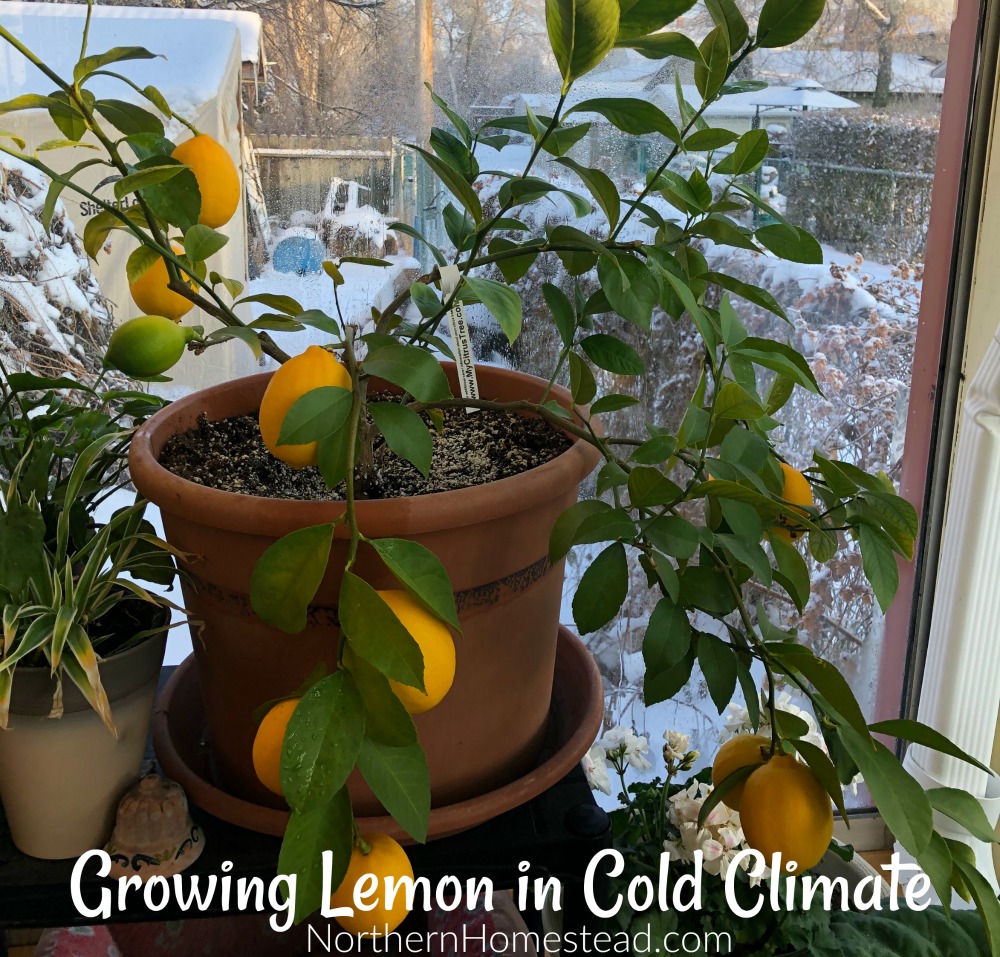
This blog article started as an indoor garden update on video. But since the Meyer lemon tree in the video got so much attention and raised questions, we have updated it to give more information about growing lemons.
An indoor garden is a place where winter does not exist, and that’s quite something when you live in a cold climate. Indeed, it is a happy place.
In today’s video (see below), we talk about the lemon tree that we grow indoors during the winter and in the Geodesic dome during the summer. It is a Meyer Lemon and the tree is now almost 3 years with us. The tree grows during the winter months in the indoor garden room. During the summer we keep it in the Geodesic Dome greenhouse. It could also stay indoors year-round, and maybe as the tree grows and we get tired of moving it, we will keep it here.
The tree does need at least 50% light, ours is at the east-west corner with windows from both sides. The indoor garden room can get quite warm during a sunny day (20-30C), ut often cool during cold nights (5-10C).
Where to get a lemon tree?
As far as we know, lemons are not true to seed. Growing one from seed is possible, and we have done it. It is a fun project. But we have never gotten any fruit.
Since we were after growing food, we bought our Meyer lemon tree at Golden acres garden in Calgary. We have since added a lime tree from the same place. Both are growing well and producing fruit.
In a cold climate where lemons are not native, we would recommend checking a good local garden center.
Pruning the lemon tree
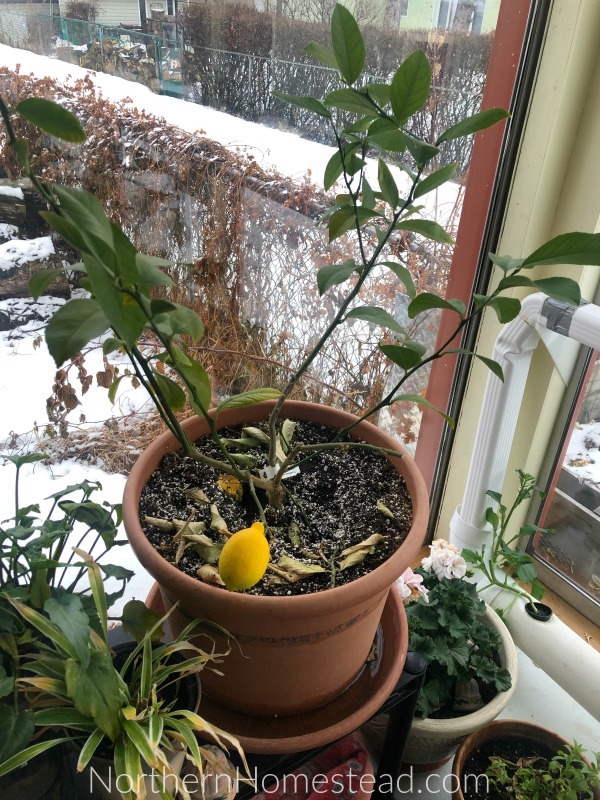
We are not experts in pruning. I watched some videos on pruning a lemon tree and found out that it is not much different than an apple tree. All the branches that grow inside the tree or straight up have to go. If something grows too low, it is pruned away as well. Our tree has a bush shape, and so far we like it. Maybe down the road, we will prune it into a tree, but so far we have not seen any need for it.
Transplanting a lemon tree
The trees are usually sold in fairly small pots, to keep them small. We transplanted the tree right away. For lemon trees, I hear that deeper pots are better. You can also use a grow bag to encourage healthy root growth. Grow bags can be easily made or bought.
How to know when to transplant?
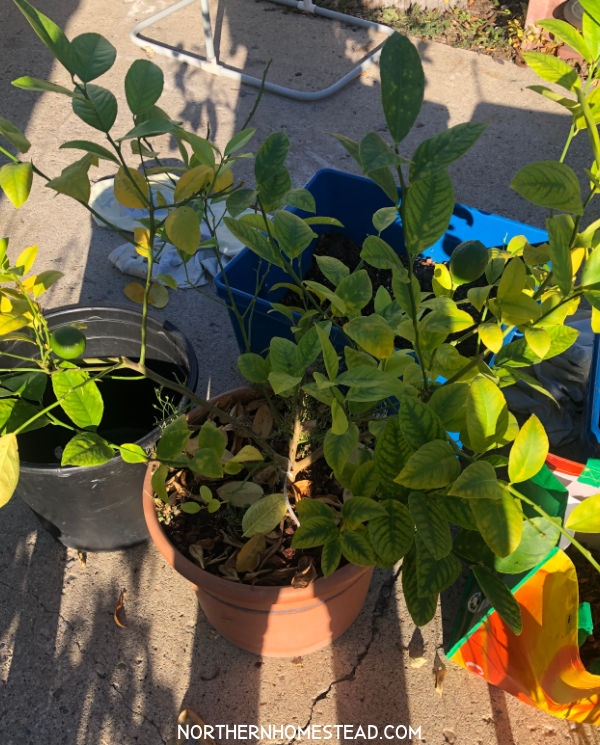
A healthy tree is lash green and is productive. When you see that the leaves are not as vibrant as they used to be, it can be two things, either the tree needs a new pot or fertilizer. It can of course be both.
Also judging by the size of the tree, if the tree is big and the pot small, it most likely would benefit from a bigger pot. You can also take the tree out of the pot and see if the tree is root-bound (lots of roots visible at the age of the pot and going around), if it is, it needs a new pot. However, if you can, do not wait till the roots are very bound. In case the roots go around, gently loosen them (you can also trim them some) before transplanting, so they can grow healthy again.
Use loose soil that retains moisture well. If using potting soil you might want to add some more vermiculate. Or make your own soil from the All new Square Foot Garden book. Mix together Mel’s Mix: 1/3 compost, 1/3 vermiculite, 1/3 peat moss.
Lemon trees never really go dormant, but do grow less during the winter. Personly we transplant in autumn, before bringing the tree into the indoor garden. The tree does not need transplanting every year, only every 2 -4 years. However, every fall we do remove and renew the top layer of soil, or mulch if used, to make sure not to transfer any unwanted insects into the indoor garden.
Mulching is a great way to keep the tree from drying out. Rice Hull’s mulch is best, coconut or bark work too.
Watering and Fertilizing the Lemon tree
The lemon tree likes to dry out between watering, especially during the winter when growth is slow.
The fertilizing for a lemon tree should be high in nitrogen. The easiest is to get a ready-made fertilizer for potted trees. Follow the instructions of the fertilizer you get that’s what we do too, no experts here.
As you see in some of the pictures, we learned about fertilizing the hard way. The tree got really deficient before I took it seriously. Potted trees definitely need fertilizing.
Pollinating an indoor lemon tree
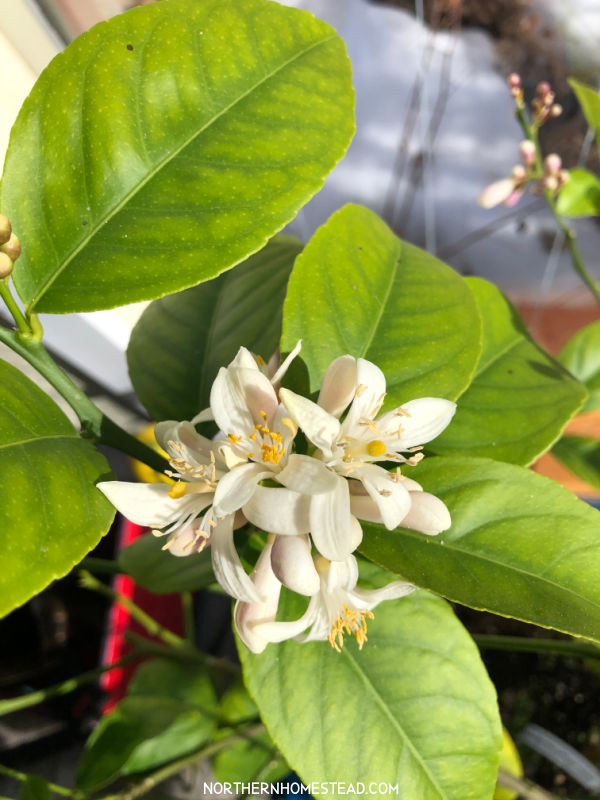
The flowers are the next best thing on a lemon tree, next to the fruit of course. The blossoms are so beautiful and fragrant.
When you look at the flowers they do not all look the same, there are male and female flowers, and that’s why lemons are self-fertile.
You can get all scientific about the different parts, however, we like to keep things simple. We have had good results by just shacking the flower cluster so the pollen moves around, very much like it would in a windy situation. Or take a brush and gently move from flower to flower to distribute the pollen as a bee would.
Harvesting and using the lemons
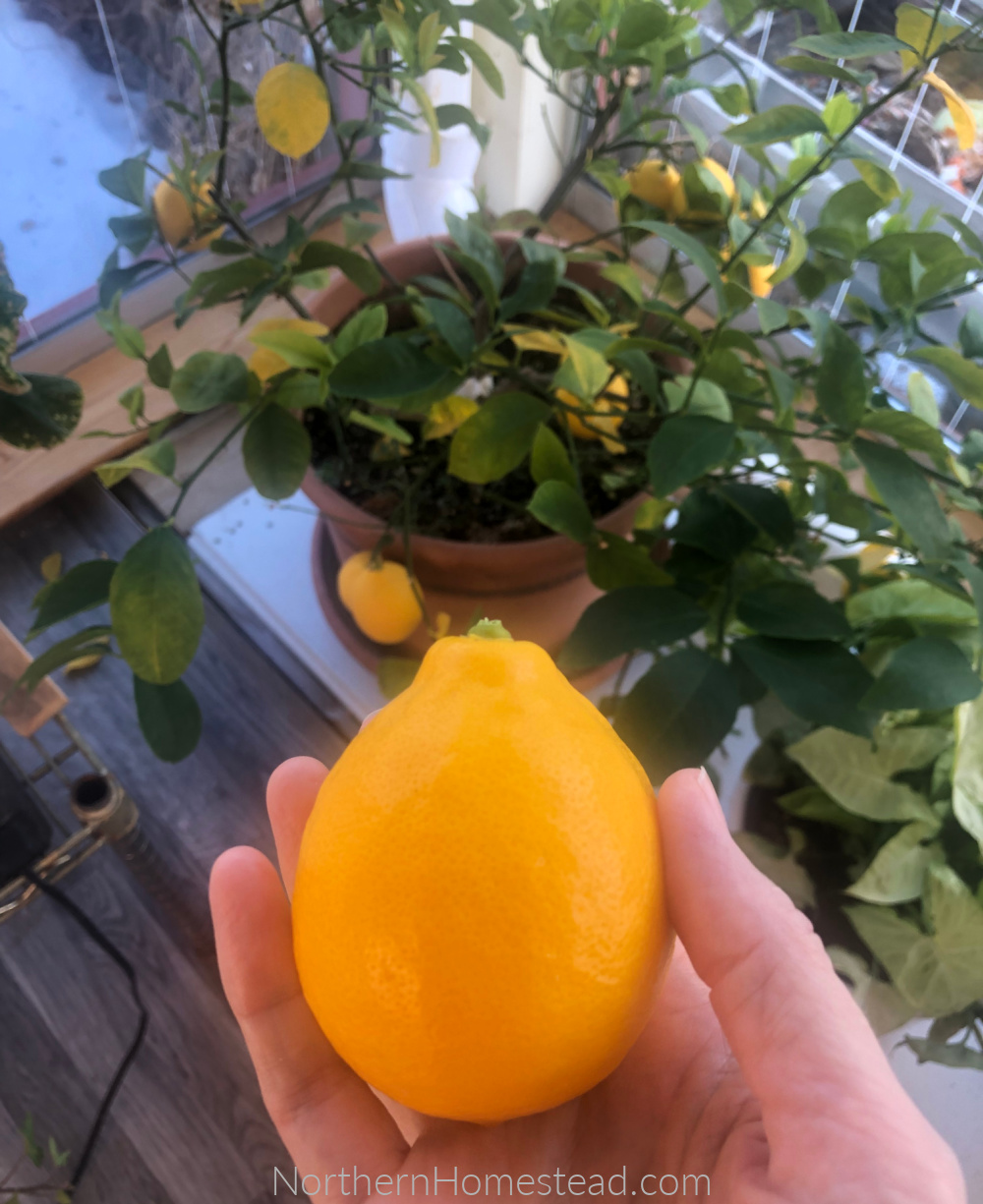
Lemons and limes ripen in the winter. Once the fruit of a Meyer lemon is big and deep yellow/orange it is ripe. The fruit can stay on the tree for quite some time, extending the harvesting season.
Over the years I have used the lemons in recipes and preserved them by blending and freezing them. When doing that, make sure not to blend the seeds, it will make the blend bitter.
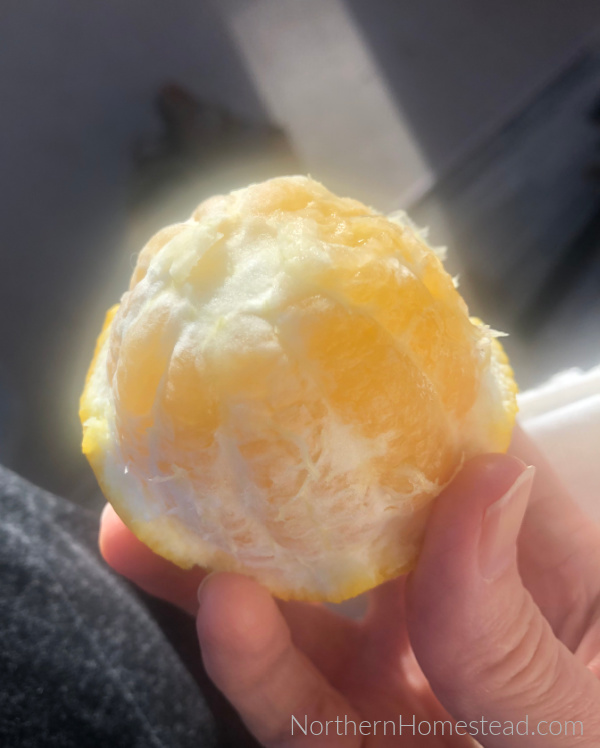
My favorite way is still just biting into one and enjoying it right from the tree. The outside peel is a bit bitter. The white between the peel and the lemon sections is somewhat sweet. The juice is lemony, but not as intense as other lemons. More refreshing I would say. Yum!
Indoor garden update on video
Now to the original garden update on video.
Also in the video is an update on lettuce, Chinese kale, kohlrabi as well as tomatoes. All of this grows in hydroponic, you can see the NFT system here, and the upgrade here.
If you are growing a lemon tree, please share your insights with us. We love to learn together.
We invite you to subscribe to Northern Homestead and follow us on Instagram, Facebook, or Pinterest for the latest updates.


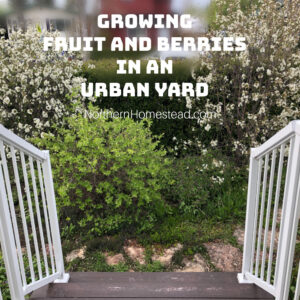





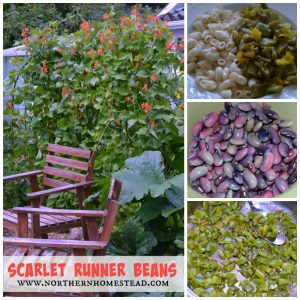



You are the folks with the plastic covered, growing dome correct? Would love to have one. I hope to try hydroponics soon! Amazing!
Yes, that’s us. In the winter we grow only indoors. The plastic-covered growing dome is great for the summer months.
I have a small myer lemon tree that died back to 6 inches above the rootstock/graft? a few years ago. I was told it would never grow normally and produce. Well, I didn’t have the heart to let it die, so kept it watered. It produced new branches and a single lemon appeared last year. This year it outgrew the space I had for it in the little hobby greenhouse so it was moved outdoors in zone 7a where we get snow at 3300 ft elevation I covered the whole pot/tree with a large thin plastic bag and wrapped it in a blanket during the first snowstorm. Left it covered for a few weeks so it basically got no light. It was tucked away in a corner near the house/patio on the southwest side of the house. Well, it lost most of the lower leaves but not the ones on the top half. It was strange as the dropped leaves were still green and healthy looking. Someone at the nursery mentioned that plastic should not be directly in contact with a lemon tree as it reacts somehow and causes leaves to drop. I’d never heard this so thought I’d share with you. As a further puzzle i also have a limequat tree potted and in the same corner of the house as the meyer. It is considerably larger 3-4 ft tall with a double layer of large clear plastic bags snuggly pulled down over the whole tree and the pot. It is thorny so I cannot remove the plastic without tearing it apart, so I just lifted the bottom in order to water this tree a bit as another freeze is expected this weekend and the soil seemed dry. This limequat is loaded with yellow fruits that are 1 to 2 inches long. It has never produced this well and I’m delighted. So, why didn’t it loose leaves since it is also covered with plastic directly in contact with the leaves and was also blanketed and without sun?? At some point I hope to have a proper sized greenhouse to put these two trees in. I have modified the set up a bit in the past few weeks as the weather got warmer and I removed the blanket. I wrapped the area with a sheet of acrylic that is about 4 ft tall. Hopeing that will keep the root and base of the trees warm enough to survive this next cold spell and just blanket the very top so some light gets in. I think you had done something like this with a low wall surrounding grow boxes to help cut the wind, so I thought it might be good to try.
Thank you for sharing your experience. Plastic is generally not the best product to protect plants, glad your limequat tree took it so well. Fabric is a better choice, or as you say to build something around. A temporary frame can make all the difference.